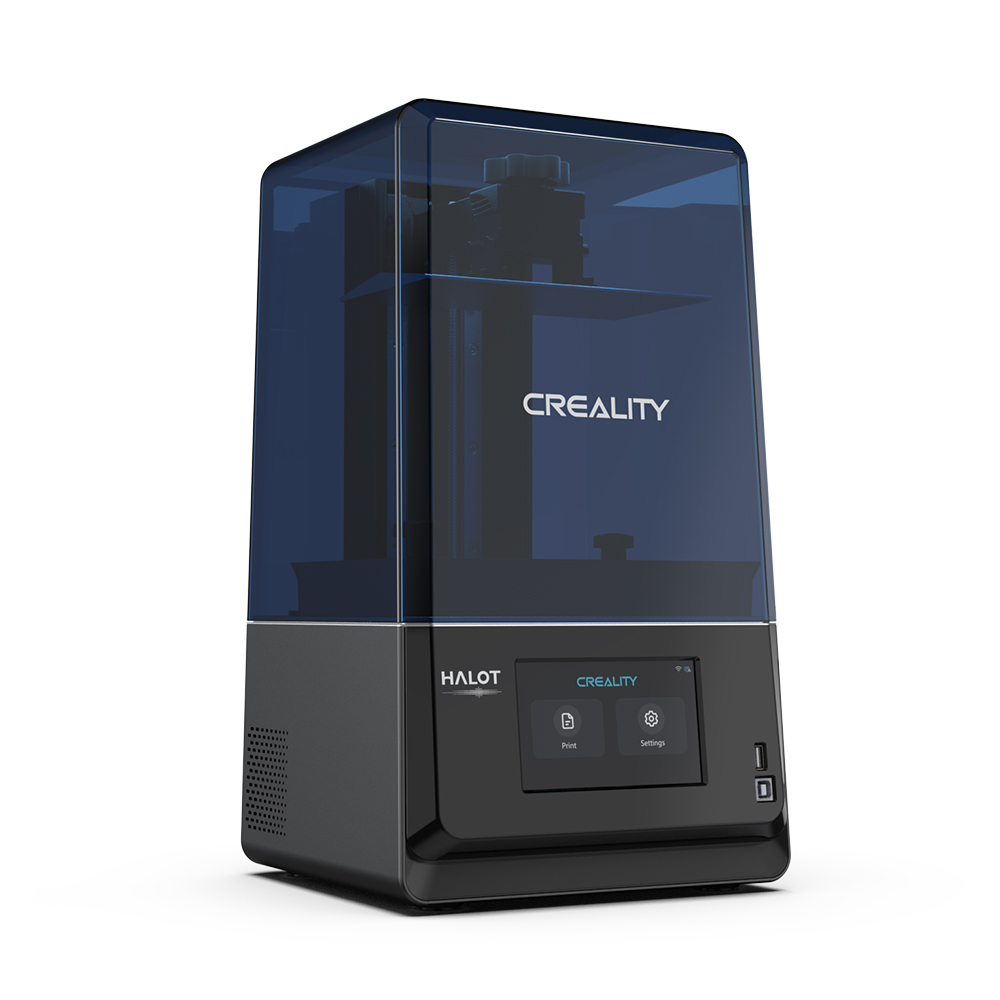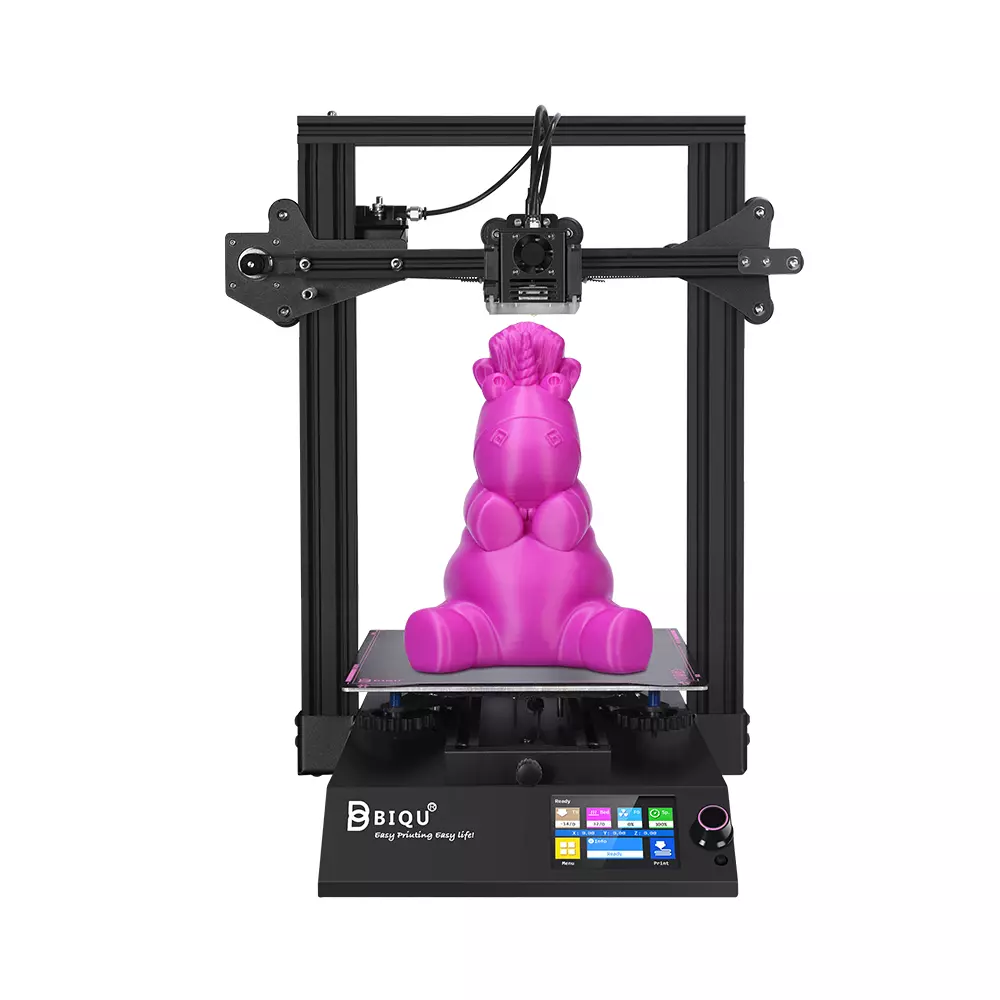Compare Halot One Plus vs BIQU B1
Comparison between the best 3D printers
Choose the best 3D printer at the best price. The cheapest 3D printers are here.
Buy a 3D printer here with 3D Fila.
 |
 |
|
| Model | Halot One Plus[BUY Halot One Plus] |
BIQU B1 |
| Printing Material | Resin | Filament |
| Buy Resin for Creality 3D Halot One Plus | Buy Filament forBigTreeTech BIQU B1 | |
| Estimated price | $399,00 | $269,00 |
| Manufacturer | Creality 3D | BigTreeTech |
| Release Year | 2022 | 2020 |
| Print Volume [mm] | 102x172x160 | 235x235x270 |
| Printer Size [mm] | 236x245x416 | 412x402x492 |
| Weight [kg] | 6,8 | 8,00 |
| Power Loss Recovery | NO | YES |
| Maximum Resolution [mm] | 0,1 | |
| Processor | 32 Bits BTT SKR V 1.4 | |
| Display | Touchscreen TFT 3,5'' | |
| Power Supply | 24V / 360W | |
| Connectivity | USB / Wi-Fi | SD / USB |
| Operating systems | Windows, Mac, Linux | |
| Date of registration in the system | 2022-10-11 | 2021-04-14 |
| Release date | 2022 | 2020 |
| Extra features | Crealitys Halot-One Plus printer stands out for its 4K+ resolution that delivers sharp details and consistent surfaces. It features a fast and responsive 5-inch LCD interface, as well as easy-to-use Halot Box software. It offers Wi-Fi connectivity and remote print monitoring, as well as an integrated air filtration unit, a rare feature in this price range. The Halot-One Plus is designed for the prosumer market, combining high quality with advanced features such as Wi-Fi and air filtration. During testing, it stood out for implementing these features at an affordable cost, while maintaining functionality. It features an attractive design with a UV-resistant blue cover and a robust dual rail system for the Z-axis, ensuring smooth and consistent movements. The large LCD and high resolution of the LCD mask (4320 x 2560) are other strong points, allowing for fine details and textures in prints. | The BIQU B1 is an advanced 3D printer with a silent 32-bit BTT SKR V1.4 motherboard and ARM Cortex-M3 CPU, offering DIY interfaces (I2C, SPI, WiFi) and dual Z-axis. Its dual BTT B1 TFT35 V3.0 operating system allows real-time monitoring and multiple printing modes, including G-code visualization effects. It stands out for its BIQU SSS (Super Spring Steel), ensuring easy model adhesion and simplified removal, with the possibility of using it on both sides. It includes a filament sensor, automatically pausing printing in case of filament breakage. The multicolored RGB lights integrated into the hotend allow you to view the printing status even at night. Additional notes include the need for a BIQU-specific Type-C cable and extra interfaces for smart filament sensor and BL Touch. |
| Support for multiple colors and materials (AMS and CFS) | NO | NO |
Notes * |
||
| Cost-benefit | 8 / 10 | 7 / 10 |
| Hardware | 1.4 / 10 | 2 / 10 |
| Tela | . | . |
| Print volume | 3 / 10 | 3 / 10 |
| Performance | 9 / 10 | 1 / 10 |
| [BUY Halot One Plus] |
Conclusion |
| In comparing the Creality 3D Halot One Plus and the BIQU B1, several key factors stand out that can help potential buyers make an informed decision. The Halot One Plus, while priced higher, offers considerable advantages in terms of print resolution and advanced features suitable for prosumers. Its impressive 4K+ resolution, comprehensive connectivity options (including Wi-Fi), and integrated air filtration set it apart. These features enhance usability and print quality, making it a strong contender for those prioritizing detail and ease of operation. Additionally, the Halot One Plus is designed with a robust dual rail system for smooth operations, further reinforcing its performance capabilities. On the other hand, the BIQU B1 is a solid choice for users seeking a more budget-friendly option without sacrificing essential functionality. Its dual Z-axis and silent 32-bit motherboard provide reliable operation, while the unique print bed solution facilitates easier print removal. The BIQU’s cost-effectiveness is reflected in its overall performance score and additional features like the filament sensor and RGB status lights, making it an appealing option for DIY enthusiasts or those just entering the 3D printing world. Ultimately, the decision between the two depends on user priorities. If high-resolution prints and advanced features are critical, the Halot One Plus is worth the investment. However, for those valuing affordability combined with reliable performance, the BIQU B1 delivers excellent value. Both printers have their strengths, but the choice should align with the user’s specific needs and budget considerations. |

